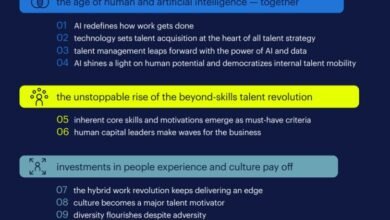How Business Leaders Can Make the ‘Right’ Termination Decisions with Less Pain & More Grace

By | Merilee Kern, MBA
After a decidedly tumultuous 2020, businesses of every size and sort—those lucky enough to haveendured the coronavirus-induced destruction thus far—are licking their proverbial wounds. Most, if not all, are strategizing ways they can not only survive in the months and years ahead—but actually thrive amid global industry’s “new normal.”
While there are any number of micro- and macro-economic influences that are wholly outside a business owner or manager’s span of control, there is one vital operational realm that can be readily governed:People. This proffers some welcome perspective since there areso many ways staff and human resource decisions directly impact the bottom line of every organization and business.
Indeed, today’s breed of multifaceted, complicated and highly competitive businesses just cannot affordan incompatible new hire, losing a key staff member or suffering the public (or legal) fallout from a disgruntled employee following a difficult termination. “Whether working to avoid budget mayhem or preserving your company’s image, learning how to navigate the hiring, preservation and firing process is a workplace essential—no matter the size or type of business,” urges leadership expert and executive coach Roxi Bahar Hewertson, CEO of Highland Consulting Group, Inc. and AskRoxi.com.
“Acquiring and retaining talent, and eventually bringing closure when employees leave, is a relational, not a transactional, process,” Hewertson says. This fundamental concept is extrapolated upon in her highly anticipated, newly-released book,“Hire Right, Fire Right: A Leader’s Guide to Finding and Keeping Your Best People,”in whichshe also defines and explores the ARC employee life cycle: Acquisition (hire right); Retention (nurture right); Closure (fire right). This book meticulously guides decision-makers through each of these three key interactions relative to both new and existing employees. The book arms leaders with a powerful set of tangible tools to help ensure their organizations are well equipped to not just take on these talent management challenges … butactually win on all fronts.
“By following a highly strategic and concerted set of systems for hiring, developing and terminating employees, decision makers can dramatically increase their company’s success rate of hiring the right people for the right job while also measurably boosting employee retention rates—and revel in the ROI those apt hires afford,” Hewertson says. “Moreover, suchdeliberate strategies specific to the firing function can also significantly lower a business’s risk of lawsuits, arbitrations and damage to the organization’s reputation if things end badly—sometimes the difference between a company sustaining profitability or, in worst case scenarios, going under entirely.”
Given her more than three decades of front-line businessand human resource experience, coupled with her standing as an esteemed thought leader, executive coach, consultant and speaker, I endeavored to connect with Hewertson for someadvice on how post-pandemic era businesses can avoid some common bumps in the road—particularly as it relates to the oft awkward and sometimes fully-fumbled function of firingan employee.Here’s what she had to say.
MK:Why is “firing right” such an important topic that you devoted an entire section of your new book to it?
RH:When you are a human resource professional or in a hiring position, firing right is just as important a part of your job as is hiring right. Both hiring and firing skillfully will make a HUGE impact on your bottom line, morale, productivity and, frankly, your own sense of well-being. No one wakes up in the morning looking forward to terminating a staff member’s employment. In fact, people hate it so much they often wait far too long. While firing the right way won’t eliminate all the pain for either party, it will make the conversation much more palatable and the result more predictable.
In any employment separation, whether voluntary or involuntary, most of us want to have clean and graceful closures. Many business owners, managers and HR professionals doubt this is likely, or even possible. But it is! For involuntary terminations, a clean closure means dot your I’s and cross your T’s with every aspect of the decision, the process and the conversation. Graceful closure means treating the individual with dignity and compassion. After all, a staffer islosing his or her livelihood, status and security, not you, so graciousness is both the right—and smart—mindset and approach.
MK: What should be considered before you fire someone?
RH: It is essential to give people an opportunity to make course corrections whenever possible. With the exception of dangerous or egregious behavior, employees must receive constructive feedback and be given a reasonable amount of time to turn things around, dependent on the issue of course. No firing should be a surprise! Each situation and each person will be different, but a good rule of thumb is to address concerns quickly, provide immediate constructive feedback and/or undertake an intervention and then be clear about the specific, measurable results you expect to see within a specific time frame. Then, follow up.
There are times when people can fool us, or perhaps an employee’s life implodes for unpredictable non-work reasons. Or, perhaps the job outgrows them, or the business is forced into a layoff situation. As the pandemic that overwhelmed industries in 2020 continues to loom heavily over all our lives, unpredictability has become an everyday event and we need to take that into account. And then there are those clear-cut moments when one incident makes the decision to terminate an immediate imperative.
MK:What can you tell us about the main reasons people get fired?
RH: Some organizations have a culture of almost never firing anyone. Others have a culture where firing is a handy “go-to” option at any moment. There are times and situations when firing fast is absolutely the right thing to do and the same is true with firing slowly and reluctantly. Too fast and too slow are both bad for business. Since firing “right” is the goal, it’s worth taking the time to explore the pros and cons of each. In determining these, leaders often ask, “Do I need to put up with this?”Or,“Am I justified in firing for it?” In answering these and similar questions and weighing the pros and cons, there are five reasons that justify the action to fire, with at least one likely fitting most terminations that arise. They are:
1. Does Not ‘Play’ Well With Others: More people are fired for this reason than any other, no matter what the public cover story might be. The inability to work well with others will continue to be the “Achilles heel” of too many very bright people because of a serious deficit of emotional intelligence competencies. We know it when we see it; an employee is consistently difficult to work with, won’t collaborate, is a bully or is high maintenance. If the employee adds great value to your organization, then trainingor coaching may help shift these behaviors. If the employee is not deserving of the investment or doesn’t respond well, it’s probably time to fire, and fast, before irreversible damage is done.
2. Loss of Trust: This is a root cause underlying several reasons to terminate. Consistently poor performance, broken promises, ethical breaches, sabotage, policy violations, lying and such all have low trust outcomes. We know in our gut when we do, and do not, trust someone and often why we feel that way. Loss of trust is a very important signal that something is wrong. Don’t ignore the warnings! Verify or disprove your feelings. Bottom line:If trust is broken for whatever reason, you will either have to find a way to work together to rebuild trust—or that employee needs to leave your organization…and the sooner, the better. No trust, no job.
3. Blame Shifting and Avoidance: When an employee avoids conversations about performance or shifts the blame to another person, they likely suspect they will be held accountable and don’t want to have that conversation. When blame shifting, the employee is failing to take responsibility for their personal choices and, instead, are choosing to throw someone else “under the bus.” If this behavior doesn’t change with feedback and coaching, it’s time to fire.
4. Insubordination: This is a sub-category of both trust and not playing well with others, but it’s egregious enough to stand on its own. Insubordination is the direct or indirect refusal by an employee to perform a legal, ethical and reasonable directive from a manager or supervisor when the directive has been clearly understood. Ifcoaching or counseling is an option then, by all means, start there. However, if the situation is serious, dangerous or threatening to others, insubordination can be just cause for an immediate termination.
5. Lack of Engagement: This can be an outcome of someone who has ‘retired in the job’ or a newer employee who came in sprinting but couldn’t or wouldn’t run the marathon. If you see low or no drive, a lack of a ‘can-do’ attitude and it’s clear their heart isn’t in it, then many of the reasons you hired this employee are no longer present. Before lack of engagement becomes a cause for firing, search for the root cause and offer to help the employee course correct. However, if you believe you hired one kind of person and you discover it is not the case, you were fooled and it’s time to either find a better fit for that employee, or it’s time to fire.
MK:OK, when it’s clearly time to fire someone, do you have any key principles that can be followed to ensure that the firing will go as smoothly as possible?
RH: If firing were easy, it would happen faster and more often when we identify underperformance and unacceptable workplace behaviors. When you are certain there is no better option than to fire an employee, you know the “what.” It is at least as important to answer the question of “how will you fire?” We all know it’s not going to be fun or easy. I suggest my 5 “BE” Principles approach to make the conversation more palatable—this due to the attention given to having a human relational approach and also because of rigorous due diligence.
These 5 “BE” Principles for involuntary terminations, when followed rigorously, can transform the experience for both parties. They are: BE Truthful, BE Fair, BE Clear, BE Respectful and BE Smart. Here’s a little bit about each.
1. BE Truthful: Employees should know exactly why they are being released from their job. Tell them the truth. People fill in blanks with inaccurate and bad news, so don’t leave room for doubt. Gross misconduct is gross misconduct and poor performance is poor performance. Sometimes it’s a matter of a bad hire or a bad fit and it’s simply time to part ways. Don’t embellish and don’t minimize; tell the truth with accuracy, sincerity and kindness. Showing sincere compassion is not a weakness in a leader and it often helps the firing conversation go much more smoothly. When telling others about the termination, it’s important to be timely and honest in accordance with your organization’s policies, while also being respectful of the terminated employee. Look to your organizational values, as most employee terminations result from a violation of one or more of its core ideals.
2. BE Fair: Fairness is a fundamental human need and expectation in our workplaces. It is a major factor in how the terminated employee feels when he or she exits the organization. Furthermore, whether or not the terminated employee is perceived to have been treated fairly is the question everyone else makes judgments upon. Asking yourself what would feel fair to you is a good litmus test. Does the punishment fit the crime? Then consider how this employee needs to hear the news. Put yourself into their shoes and imagine what they might be feeling. While you and that fired employee may disagree about what is or is not fair, be kinder and more gracious than you have to because, in the end, that employee will still go away. The only question is will they go quietly or not? If you have done everything you should and could have to help this person be successful, and they still didn’t cut it, then sleep easy. If not, there is more work to do before you fire that person.
3. BE Clear: Whenever possible, you should have had at least one, and preferably several, discussions with the employee where it’s been made crystal clear that their job was on the line and exactly why that is the case. If the person is let go after a thoughtful process of attempted improvement, remind them what was discussed and when, what needed to happen by when and spell out how they did not succeed in making the changes necessary to continue in their position. Document all of these conversations carefully. Do not put yourself in a position to defend this decision with the employee; it is not a negotiation, it’s a final decision. The decision to terminate employment should have been made with excellent due diligence and should not be a surprise. In this conversation, you are following through with what you said would happen. There’s no more “if only” or “what if” scenarios to be discussed. Cut to the chase, make whatever offer you have decided upon (resignation option, money, severance, reference responses, timing, etc.), then stand up, put out your hand and wish the employee well. Be quiet. It is not a weakness to show another human being your compassion for them.
4. BE Respectful: Always take the high road. Believe it or not, you could be fair with the process and not respectful to the person. Being respectful to the employee is not only the right thing to do, it is also the smart thing to do. People typically don’t sue people when they feel respected. This should not feel or be transactional any more than hiring should be transactional. You are ending itand you need to acknowledge the pain in doing so. It is in your best interest to keep that relationship respectful and professional every step of the way. This is definitely not the time to say,“I told you so,” or list off all the things they could have done differently. It’s not about you; it’s about them. Keep in mind, this person is an adult and the conversation needs to treat them that way.
5. BE Smart: There are emotional aspects of the termination discussion and there are other factors to consider, like might the employee become volatile, do you need security precautions, whether or not HR or others should be present in the room and ensuring your exit checklist is complete. Your organization should have a solid termination process to follow to keep you out of legal and any other kind of jeopardy. You should have prepared a comprehensive Termination Checklist long before you begin a termination meeting with an employee. I actually avail an example of this in my book. It is almost never worth it to be stingy when offering some money, as it can go a long way toward making a bad situation turn out a lot better. Having said that, when the firing offense is so egregious that you’d rather risk a lawsuit then, by all means, offer nothing of value. It is the smart thing to take all the time you need to be well-prepared and then stick to the plan unless something truly extraordinary changes your mind. Serious and rigorous preparation significantly reduces the odds you’ll have to change your decision.
It’s no-nonsense, practical, tell-it-like-it-is insights like these that have led Hewertson to be featured in an array of premier publications like Forbes, Entrepreneur Magazine, Inc., Chief Learning Officer, Training Industry Magazine, HR.com and many more. She’s graced the stages of TEDx and been heard from coast to coast both on television and radio. Having served five years as adjunct faculty in Cornell’s School of Industrial and Labor Relations, where she received her master’s degree, Hewertson has spent her career as a frontline professional mastering how and why leaders succeed or fail. With over 40 years “in the business,” it’s certainly no surprise she’s solidified her standing as a soughtafter national expert helping executives and managers understand the impact of their actions, while building the right skills and cultures fostering great organizations and desirable results.
In addition to writing, which includes her first highly acclaimed book, “Lead Like it Matters…Because it Does,” Hewertson’s award-winning online course, “Leading with Impact: Your Ripple Effect” (for both individuals and groups of learners), moves leaders through four core mastery levels: Personal, Interpersonal, Team and Culture and Systems.
Being fired is a decidedly tough experience for the employee and leaders, even when it is fair, done respectfully and with grace and integrity. By heeding even some of Hewertson’s strategies and employing her principles, both parties have a much better opportunity to end the workplace relationship with dignity and grace.
Author Bio:

Forbes Business Council Member Merilee Kern, MBA is an internationally-regarded brand analyst, strategist and futurist who reports on noteworthy industry change makers, movers, shakers and innovators across all B2B and B2C categories. This includes field experts and thought leaders, brands, products, services, destinations and events. Merilee is Founder, Executive Editor and Producer of “The Luxe List” as well as Host of the nationally-syndicated “Savvy Living” TV show. As a prolific business and consumer trends, lifestyle and leisure industry voice of authority and tastemaker, she keeps her finger on the pulse of the marketplace in search of new and innovative must-haves and exemplary experiences at all price points, from the affordable to the extreme—also delving into the minds behind the brands. Her work reaches multi-millions worldwide via broadcast TV (her own shows and copious others on which she appears) as well as a myriad of print and online publications. Connect with her at www.TheLuxeList.com and www.SavvyLiving.tv / Instagram www.Instagram.com/LuxeListReports / Twitter www.Twitter.com/LuxeListReports / Facebook www.Facebook.com/LuxeListReports / LinkedIN www.LinkedIn.com/in/MerileeKern.






